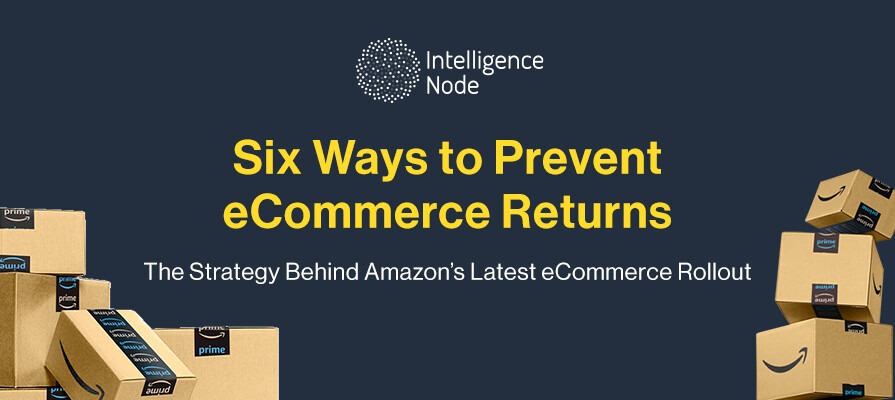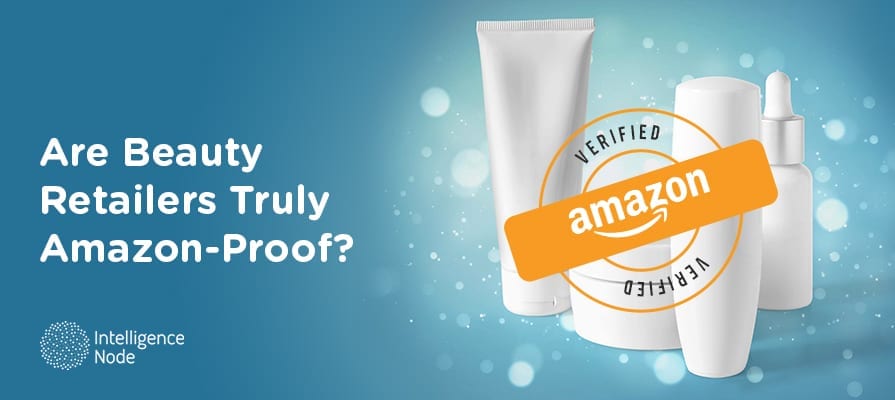Post-purchase experiences such as “Free & Easy Return Policies” have long since set the standard for digital shopping experiences online. As eCommerce returns rates rise, however, major brands and marketplaces have scrambled for effective, lower-impact solutions to protect their margins. This month, a behemoth of online retail rolled out a potential fix.
Shoppers utilizing the ‘UPS Store Dropoff’ return option on Amazon may now face a nominal fee, which will be automatically deducted from their refund amount. Representatives have assured customers that at least one free return option will continue to be available to shoppers and designated dropoff points have been allocated by region for shoppers to manually drop off items. Similarly, the minimum order amount to avail free shipping was recently increased on Amazon Fresh.
Prior to this, one key measure was taken to prevent returns altogether. Thanks to Amazon’s recent update regarding ‘frequently returned items’, digital shoppers will now be notified when they are about to purchase a product that has seen higher than average returns. Such users will receive a message suggesting a closer look at customer reviews and ratings to verify the quality or authenticity of the product. These changes were actioned in the midst of inflation and economic downturn and act as a remedial measure to fix margin leakages via returns.
The Hidden Cost of Returns
On average, an online shopper returns a massive 15-40% of products they buy online. During the holiday season, 2 out of 3 shoppers return gifts and purchases. These rates spike for certain industries, as apparel in particular sees an average return rate of 10% overall. In fact, with so many businesses boasting free and easy returns for products, many shoppers often order more than they intend to keep, returning the spares after they are delivered. This can be because they are unsure of the size of clothing and footwear or do not trust the quality of the products they order, among other factors.
For businesses, however, these numbers stack up: even if items are returned in perfect condition, returns can cost up to 66% of the original price of the product. At Amazon, returned items are often disposed or liquidated. Here, the items are auctioned off in bulk via liquidation marketplaces, or even sold by resellers at flea markets or on Craigslist and eBay. Despite Amazon’s innovative methods of repurposing returned items, very few qualify for resale (that still run the risk of returns), and most end up on bootleg sites and refurbishing stores such as “Amazon Renewed”, at a loss to the sellers.
Excessive poorly managed return policy implementation can create a chain of operational expenses if left unchecked, not limited to lost revenue. Costs accumulate due to required additional resources and charges for labor, transport, logistics, inspection, repackaging, as well as processing and restocking. This can compound to massive expenditure and unaccounted lost sales, and more often than not, are completely avoidable.
With intuitive, data-driven insights to inform online strategy, as well as enriched product content optimized for the digital shelf, retailers can lower return rates, protect margins, and improve customer satisfaction. Here are 6 deceptively simple tricks to level up your eCommerce store instantly and stay profitable in 2023.
Provide Accurate Product Descriptions
One of the main reasons for returns is a discrepancy between the product received and the product described online. To avoid this, provide detailed and accurate product descriptions, including dimensions, materials, and colors for each product. Correctly categorizing and labeling products followed by clear indications of materials (or ingredients and fabrics) used, helps consumers easily navigate your product offerings and identify their ideal choice. Simple displays of available options, colors, and alternatives can be included to ensure they select the right product.
Use High-quality Product Imagery
High-quality product images can help customers get a better sense of what they are buying. Many websites and Marketplaces online utilize demo videos and HD zoom features as well as 360-degree capabilities for users to inspect items closely before purchase. Using multiple images from different angles and communicating accurate dimensions and product sizes via human models for reference is always beneficial and provides a personal touch for shoppers.
Provide Size Charts
Apparel and footwear in particular, are often returned because they do not fit properly- shoppers usually buy the same product in multiple sizes to keep the one that fits. Provide size charts that are accurate and easy to understand, preferably including various measurement styles (US, UK, etc) to help customers choose the right size. Today, AR ‘try-ons’ are becoming more popular, as misconceptions regarding the look and style of items such as shoes, eyeglasses, and accessories can be resolved with 3d views of the item.
Offer Customer Reviews
Customer reviews and ratings provide shoppers with additional information and insights that may not be included in the product description. They can also help build trust with potential customers. By monitoring and maintaining a robust review section for your store (even incentivizing shoppers to leave reviews with rewards), your brand can collect valuable data regarding the shopping experience of your store and improve your e-store instantly. Shoppers can thus instantly avoid lower-rated items, and subsequent returns, without having to purchase unsuitable items.
Chatbots & Recommendations
Offering chatbots and virtual sales assistants on your e-store is a new way to aid shoppers through their online shopping experience. Brands such as Whole Foods, Sephora, and even Spotify have included chatbots in their online stores to resolve consumer queries, lead them to relevant products, and even upsell or cross-sell popular products. Creating accurate recommendation systems and algorithms in your store can also help automatically lead shoppers to similar products as they browse or recommend good combinations and complementary items. This provides a personalized experience and helps shoppers navigate your store by leading them directly to relevant products as they shop.
Provide Clear Return Policies
Finally, make sure your return policy is easy to understand and clearly outlines the steps customers need to take to return a product. This can help reduce the likelihood of returns due to confusion or frustration. Protect your brand against returns of damaged, faulty products and create timelines within which products can be returned.
By implementing these tips and bullet points, retailers can help reduce return rates, recover costs, and improve overall customer experience. The right retail software solutions can automate many of these processes by automating the bulk of tedious, manual detailing, even providing competitor benchmarking to boost your brand. Solutions such as Intelligence Node empower businesses to eliminate human error and boost profitability in real-time, allowing your teams to focus on innovation, consumer experience, and more- to learn how we work, book a demo today.




